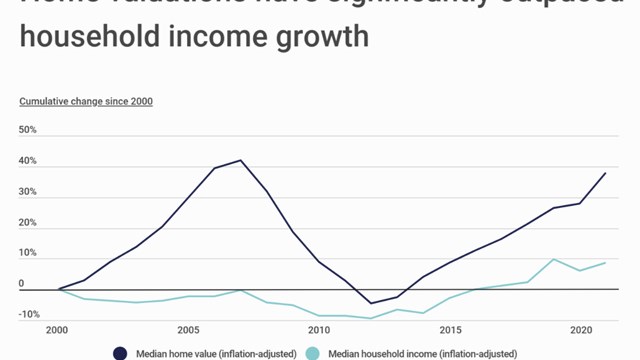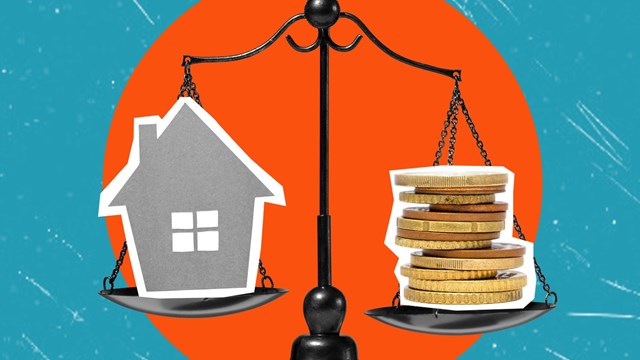The hit musical Rent burst onto Broadway last year amid unanimous praise for its originality and high-
energy performances. This tale of down-and-out New Yorkers struggling to pay the rent while they face issues of life and death has turned out to be more than just the anthem of a new generation. In addition to turning Broadway on its ear with its rock and roll score and contemporary perspective, Rent has turned out to be the forerunner of a major real estate trend.
Within the past year, residential rents in Manhattan have hit an all-time high, with vacancy rates at rock bottom. Stories abound of choosy landlords demanding three months rent as a security deposit and apartments being snapped up before they make it to the open market. The heady days of the 1980s have definitely returned when it comes to the rental market. With studio apartments renting for $1,500 a month and one-bedrooms at $2,000, the shape of the New York real estate market has undergone a dramatic change recently.
Even the weekend rental market has gone through the roof as beach-bound Manhattanites sign seasonal rentals in the Hamptons for upwards of $50,000what a bargain for three months in the sun.
The Wallstreet Factor
Take a look at the stock market: was that 7,000 I saw flash by in a blur? With the stock market on the fastest uphill climb in history, Wall Street bonuses have outstripped even their previous outrageous highs. Much of the more than $8 billion in bonuses taken home by New York City's 150,000 security industry employees will wind up invested in real estate.
All of Manhattan is a Wall Street-driven economy, says Frederick Peters, president of Ashforth Warburg Associates, a 100-year-old brokerage firm in Manhattan. And the bonuses this year were big.
Clark Halstead, founder and managing partner of The Halstead Property Company, a brokerage firm with offices in four Manhattan locations and East Hampton, says, The bonuses were enormous in 1996 and a lot of people are spending them. If there is a serious correction on Wall Street it may put the brakes on the real estate market. But it would not have the devastating effect that it had in '87.
While Wall Streeters make up only five percent of the city's private work force, their bonuses, which can be as high as $10 million, have a very significant impact on the city as a whole.
The financial market drives Manhattan, says Peter Marra, president of William B. May, a 130-year-old brokerage firm with offices in Manhattan, Brooklyn and Westchester. Not just the people working on Wall Street, but the lawyers, accountants, and so on who are involved in the industry.
Own For Less Than Renting
The biggest problem facing the real estate market today is a lack of inventory. Even the studios and one-bedrooms, long the unwanted chaff of the market, are getting bought up as high rents combine with rising incomes to push more New Yorkers into buying.
Studios and one-bedrooms took a big jump in '96, says Marra, driven by high rents.
We had a record number of transactions among lower priced apartments in 1996, says Peters. There has been a lot of absorption of old stock.
One-bedrooms have benefited by high rents, adds Halstead. Studios have always been a problem. There were way too many built in the '80s, and any ffb one who doesn't have to live in one won't. But today it can be cheaper to own than to rent, he says, and that has caused studios and one-bedrooms to sell again.
According to Barbara Corcoran, chairman of the Corcoran Group, one of the city's largest brokerage firms, Wall Street buyers spent an average of $1.18 million on new apartments in 1996. According to Corcoran, 78 percent of our one and two-bedroom customoers came from rentals.
Prices seem to be about ten to 20 percent higher now than when we started looking a year ago, laments one apartment buyer, citing several new Upper West Side condominiums where two-bedroom units are selling for $500,000 to $600,000.
As the available apartments are absorbed by eager buyers, prospects for '97 indicate that prices will continue to rise across the board. While some new units have come on the market and developers are beginning to break ground once again with new construction, it seems that demand is still far outstripping supply.
There could be a lot more new construction and we could sell it immediatelyin all price ranges, says Marilyn Harra Kaye, president of the Prudential MLB Kaye International Realty. All parts of the city are getting stronger due to a lack of inventory. The whole city has gained strength. She attributes the new optimism to the city's lower crime rate, the Mayor's efforts to improve services and a more positive attitude toward New York.
A Different Story in the Boroughs
For all the hype surrounding the surge in prices in Manhattan, prices in the outer boroughs are still a long way off from where they were at the peak of the market in the late '80s. Amy Mack, board secretary at 3215 Netherland Avenue in Riverdale, bought her two bedroom co-op in 1990 for $109,000. That was a bargain in those days, she says, adding that today, comparable units in her building, which offer high ceilings, large living rooms, spacious kitchens and hardwood floors, are selling for $60,000 to $65,000.
Our building was at a virtual standstill on resales for a couple of years. But in the last year or so, sales have picked up, says Mack optimistically. More people are putting their apartments on the market and prices are creeping upward with each successive sale.
Rents in the boroughs have not taken the stupendous upward spike that they have in Manhattan. Rents are not rising enough to spur buying in the boroughs, says Michael Cantor, a principal with Cantor Real Estate in Brooklyn, one of the area's largest co-op and condo management firms. Until the metropolitan area gets more jobs, prices won't go up outside Manhattan, he predicts.
Cantor has, however, seen an increase in sales volume in the boroughs of about 15 percent from 1995 to 1996. There are fewer foreclosures now than there were three to four years ago, he says. The economic condition of shareholders has stabilized and that stabilizes the market. Banks are no longer selling units in foreclosure at bargain-basement prices. The Brooklyn and Queens markets have become stronger, but are still quite a bit below the peak.
Changes In Rent Controls?
In June, legislators in Albany must decide what the city's new rent regulations will look like. Many people speculate that luxury decontrol, currently affecting renters whose annual income is over $250,000 and whose rent is below $2,000, will be expanded to a lower income rate and/or a lower rent. In addition, many people expect that there may be changes in the vacancy decontrol laws, perhaps opening all vacated units to market rents. And some legislators in Albany are pushing to abandon rent controls altogether, a system set up after World War II that many New Yorkers feel has become anachronistic.
We hope that the state legislature will recognize that 50 years of rent regulations have failed to produce more housing or better housing and will give the free market a chance to meet New York City's housing needs, says Jack Freund, executive vice president of the Rent Stabilization Association. We're looking for a true phase-out of t d84 he rent regulation system, he adds.
Deregulation could have a big impact on co-op and condo prices, says Cantor. If someone's rent is going up from $500 to $900 he may decide to buy.
At the other end of the spectrum on the rent decontrol issue, Peters says, If someone is paying $3,000 a month in rent and the rent rises to $15,000 per month because of luxury decontrol, it makes more sense for him to buy.
Whether it is $900 a month tenant moving to a studio co-op or a $15,000 a month tenant moving to a three-bedroom on Fifth Avenue, changes in the rent control laws will have a significant impact on the market.
But even if legislators choose to stick with rent regulation as we know it, the New York real estate market appears to be in very good shape. The upsurge in Manhattan is slowly trickling out to the surrounding areas and the overall perception is that New York is once again the place to be. With renewed confidence in the city, buyers are returning to the co-op and condo market with a vengeance. If you are a seller waiting for the optimum time to place your property on the market, you might want to hang on a little longer to let prices rise further. If you are a buyer, however, make your move now before you find your dream apartment spiral up and out of your price range.
Ms. Chesler is Executive Editor of The Cooperator.






Leave a Comment